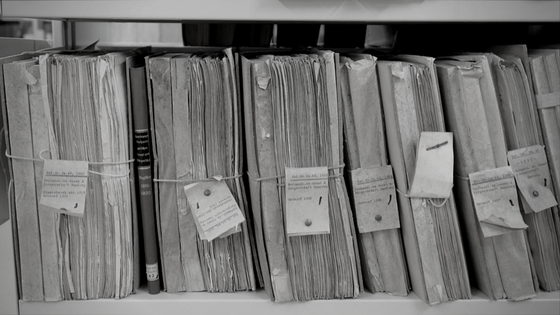With the rise in computer usage, people said that paper filing would become obsolete, but that hasn’t been the case! As a professional organizer, I have seen how being disorganized and not having a good filing system has cost businesswomen money and time.

According to Organized World, the use of office paper has tripled since the birth of the computer. The 80/20 rule is especially true hear, meaning that we probably don’t use 80% of the files we keep. The Small Business Administration states that 80% of the papers we file, we never refer to again.
Let’s also look at the cost of doing and maintaining filing. Gartner Group, Coopers & Lybrand, Ernst & Young found It costs about $25,000 to fill a four drawer filing cabinet and over $2,100 per year to maintain it. Americans waste more than 9 million hours each day looking for lost and misplaced articles according to the American Demographic Society.
If you haven’t decluttered or organized your files, now is the time!
Clearing File Clutter
Take out all of your files. Retrieve any other files that may be in other areas of the home or in your briefcase, computer bag, etc. Have a pen and pad in case you need to jot down any notes.
Sort all of your files into broad categories. I have 3 drawers of files in one filing cabinet. Personal, Business and Financial are my three main categories. All files fit in one of the categories.
Once you have created your broad categories, begin sorting within each category. I am going to suggest you again keep your files simple with broad categories. Within personal, I have one insurance file that holds all insurance policies.
A mistake that people often do is making filing really complicated. You don’t want it to be. Make it simple not only for you, but for others that might need access to your files.
Purging
After you have sorted your files, it’s time to let go. I always recommend talking with an attorney and accountant on retaining certain files and see what their recommendations and guidelines are.
This is can be challenging, especially if you are in the habit of saving everything or not filing because you cannot make a decision. Commit to making a decision on all your files. I promise that once you do an overhaul, it is easy to maintain once you keep up with it.
Here are some suggestions on what to purge:
Ask yourself if you really need to save it and then ask again!
Clippings, blogs, coupons, and articles. Is the information stale or obsolete? With the power of the Internet and Google, you can most likely find what you need and bookmark on your computer.
Duplicates. Generally speaking keep no more than two.
Previous drafts of letters/proposals/forms/agreements. Keep final versions only. Why would you keep what did not make the cut? I do a lot of writing and tell myself that I want to start fresh with any new project instead of recycling any previous thoughts and words.
Manuals. These are bulky and take up a lot of space. Manualsonline.com is one resource where you can most likely find your manual if you ever need it.
Memorabilia. If it has been sitting in a filing cabinet for a while, does it really mean that much to you?
Don’t save because you “might need it someday”. Trust you will find and get what you need when you need it.
Getting Your Files Organized
Once you have purged, it is time to organize your files. You have created your broad categories and then your separate files. Here are some tips:
- Name your file based on retrieval. If you were to go looking for the file, what would you call it?
- Continue the theme of simple and broad with your titles
- Group similar files i.e. Podcasting—Coaching; Podcasting – Production
- Use titles that demand action: Create Clutter Free Living Episodes
- Label clearly. Print neatly or use a label maker.
- Don’t zigzag; use the middle tabs as it is easier on eye
- Better to have 20 files with 10 pieces than 50 with two: less likely to remember what is in numerous files.
Once you have completed your files, create an index to remind what goes where and why. Keep copy on your desk or computer.
Two easy methods to organize your files are to alphabetize or color code. My personal files have purple hanging folders with manila folders. You could do the standard green hanging and have colored folders if you prefer.
Leave file drawers with room to grow. If you need to file something immediately, you will have a place to put it. You want to be able to file and retrieve papers easily.
Commit to taking the time filing. Whether it is five minutes at the end of the day, a half an hour Saturday morning or an hour monthly, do it! If you don’t take the time to file and maintain your system, it will become clutter once again.
Do a yearly tune up with the steps above and make changes as necessary. I tend to go through my files twice a year.
Three things to remember:
- You most likely don’t refer to 80% of the files you have; Make a real effort to purge!
- Talk with an attorney and accountant on retaining certain files and see what their recommendations and guidelines are.
- Alphabetizing and color-coding are two of the easiest filing systems to set up and maintain.






















